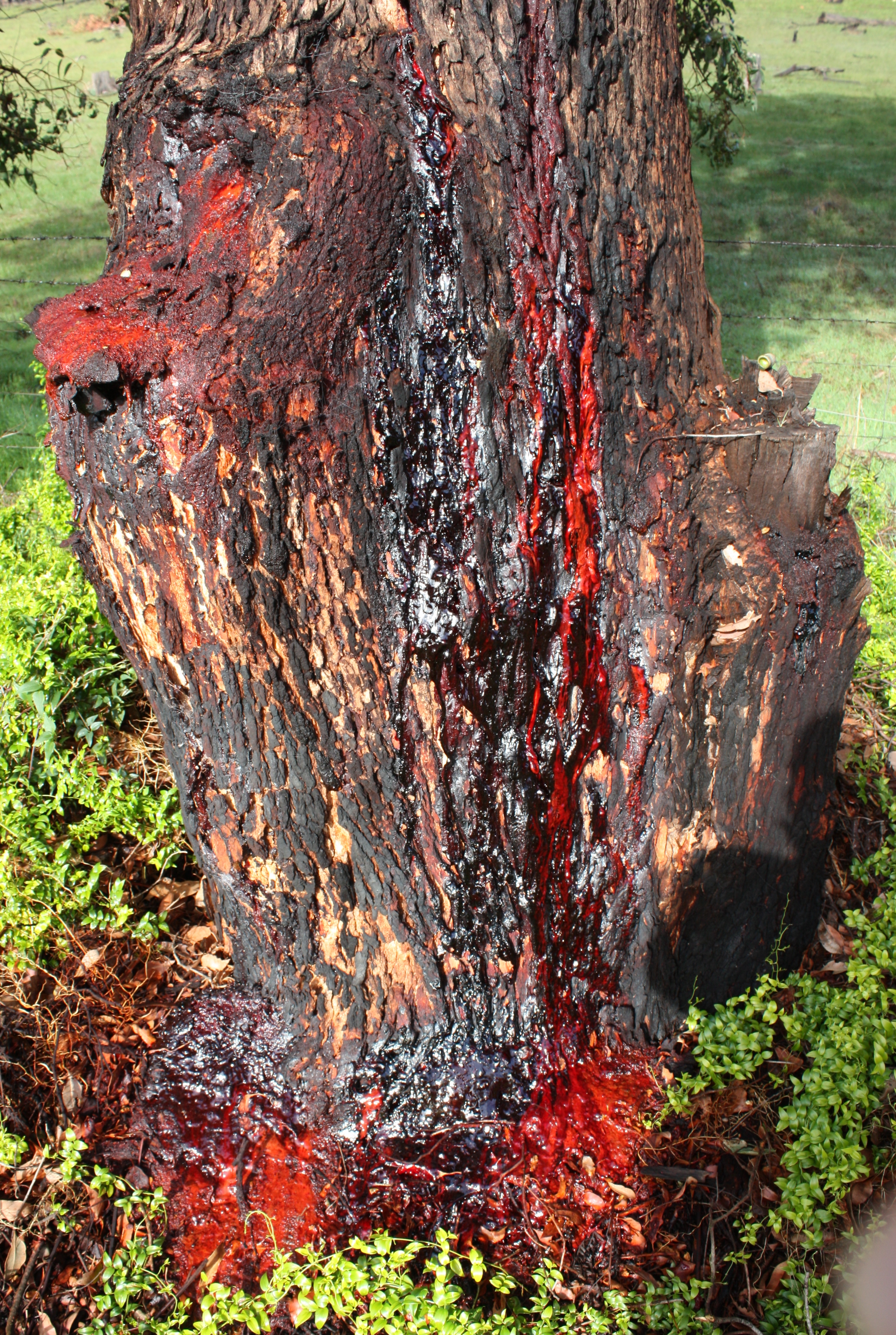|
Kinotannic Acid
Kinotannic acid is the chief constituent of the kino gum, of which it contains 70 to 80 per cent. Kino also contains kino red, a phlobaphene produced from kinotannic acid by oxidation. It is closely related to the tannin from catechu ( or ) is an extract of acacia trees used variously as a food additive, astringent, tannin, and dye. It is extracted from several species of ''Acacia'', but especially ''Senegalia catechu'' (''Acacia catechu''), by boiling the wood in wate ...; its non-glucosidal nature was established by Bergholz. Properties When dry distilled it yields pyrocatechine and protocatechinic acid. It is soluble in water. Solutions are precipitated by lead or copper salts. Kinotannic acid is degraded by oxidation when exposed to air. References Tannins {{polyphenol-stub ... [...More Info...] [...Related Items...] OR: [Wikipedia] [Google] [Baidu] |
Kino (gum)
Kino is a botanical gum produced by various trees and other plants, particularly bloodwood species of eucalypts (''Angophora'', ''Corymbia'', ''Eucalyptus'') and ''Pterocarpus'', in reaction to mechanical damage, and which can be tapped by incisions made in the trunk or stalk. Many ''Eucalyptus'', ''Angophora'' and ''Corymbia'' species are commonly referred to as 'bloodwoods', as the kino usually oozes out a very dark red colour. Kino flow in angiosperms contrasts with resin flow in conifers. The word ''kino'' is of Indian origin. In Australia, "red gum" is a term for kino from bloodwood trees and red acaroid resin from ''Xanthorrhoea'' spp. Composition Astringent tannin compounds are a major active component of kinos.Edited by Pearsall, J., and Trumble, B., ''The Oxford English Reference Dictionary'', Oxford University Press, Second Edition, 1996, The chief constituent of kino is kinotannic acid, of which it contains 70 to 80 per cent. It also contains kino red, a phlobaphene ... [...More Info...] [...Related Items...] OR: [Wikipedia] [Google] [Baidu] |
Phlobaphene
Phlobaphenes (or phlobaphens, CAS No.:71663-19-9) are reddish, alcohol-soluble and water-insoluble phenolic substances. They can be extracted from plants, or be the result from treatment of tannin extracts with mineral acids (tanner's red). The name ''phlobaphen'' come from the Greek and Latin roots in English, Greek roots φλoιὀς (''phloios'') meaning Bark (botany), bark and βαφή (''baphe'') meaning dye. No biological activities have currently been reported for phlobaphenes. Phlobaphenes from Crataegus, hawthorn fruits (''Fructus Crataegi'') may have a specific action on the coronary circulation. They are converted into humins in soils. Naturally formed phlobaphenes Natural phlobaphenes are the common Bark (botany), bark, pericarp, Corncob, cob glume and seed#Seed structure, seed coat (''testa'') plant pigment, pigments. They have not been found in flowers, unless the brown and black pigments in the involucrum of certain compositae are found to be of the phlobaphene typ ... [...More Info...] [...Related Items...] OR: [Wikipedia] [Google] [Baidu] |
Tannin
Tannins (or tannoids) are a class of astringent, polyphenolic biomolecules that bind to and precipitate proteins and various other organic compounds including amino acids and alkaloids. The term ''tannin'' (from Anglo-Norman ''tanner'', from Medieval Latin ''tannāre'', from ''tannum'', oak bark) refers to the use of oak and other bark in tanning animal hides into leather. By extension, the term ''tannin'' is widely applied to any large polyphenolic compound containing sufficient hydroxyls and other suitable groups (such as carboxyls) to form strong complexes with various macromolecules. The tannin compounds are widely distributed in many species of plants, where they play a role in protection from predation (acting as pesticides) and might help in regulating plant growth. The astringency from the tannins is what causes the dry and puckery feeling in the mouth following the consumption of unripened fruit, red wine or tea. Likewise, the destruction or modification of t ... [...More Info...] [...Related Items...] OR: [Wikipedia] [Google] [Baidu] |
Catechu
( or ) is an extract of acacia trees used variously as a food additive, astringent, tannin, and dye. It is extracted from several species of ''Acacia'', but especially ''Senegalia catechu'' (''Acacia catechu''), by boiling the wood in water and evaporating the resulting brew. It is also known as cutch, black cutch, cachou, cashoo, terra Japonica, or Japan earth, and also in Hindi, in Marathi, in Odia, in Assamese and Bengali, and in Malay (hence the Latinized ''Acacia catechu'' chosen as the Linnaean taxonomy name of the type-species Acacia plant which provides the extract). Uses As an astringent it has been used since ancient times in Ayurvedic medicine as well as in breath-freshening spice mixtures—for example in France and Italy it is used in some licorice pastilles. It is also an important ingredient in South Asian cooking paan mixtures, such as ready-made paan masala and gutka. The catechu mixture is high in natural vegetable tannins (which accounts for its a ... [...More Info...] [...Related Items...] OR: [Wikipedia] [Google] [Baidu] |


